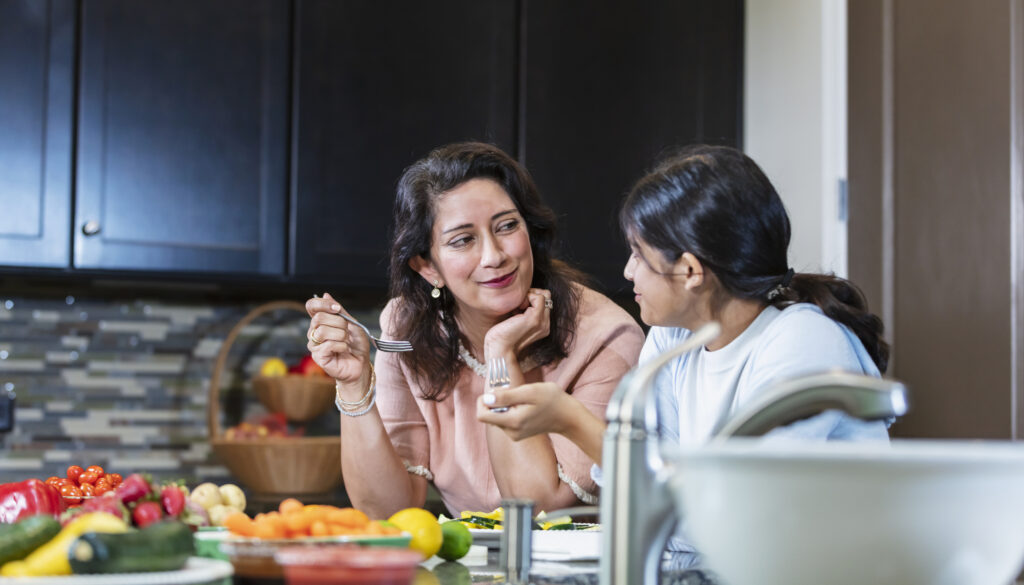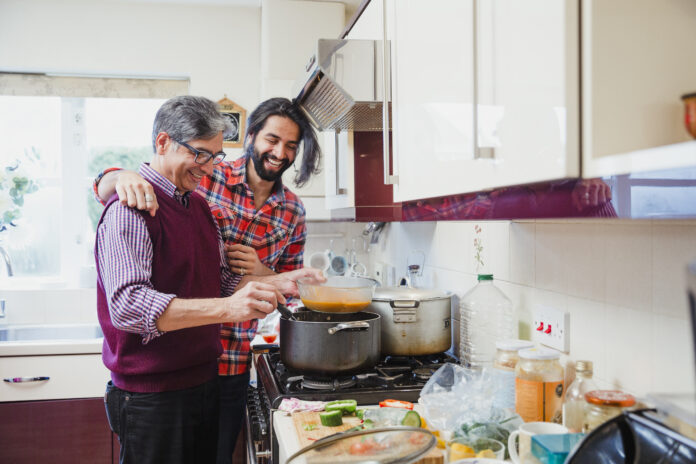By Vanita Pais, RD, CDE, CPT
Living with diabetes is a relentless journey — and every day, people show incredible resilience by making choices that support their health.
For South Asians, food is more than nourishment — it’s a celebration of culture, family and tradition. South Asian cuisine is known for its bold flavours, aromatic spices and diverse ingredients. And with a few thoughtful adjustments, these beloved dishes can be transformed into meals that are delicious and support your diabetes management.
Adapting traditional recipes isn’t about restriction — it’s about empowerment. It’s about using your knowledge, creativity and strength to make choices that honour your heritage while supporting your well-being.
For Diabetes Awareness Month, we’re sharing practical tips to help you do just that — because resilience isn’t just about managing diabetes, it’s about thriving with it.
Reap the Health Benefits — Without Giving Up What You Love
Traditional South Asian diets are naturally rich in fibre and plant-based ingredients, including vegetables, fruits, beans, nuts, and grains like millets (such as amaranth, buckwheat and sorghum). These foods can help manage blood sugar levels and support overall well-being.
Spices like turmeric and curcumin not only enhance flavour but also offer anti- inflammatory benefits. Fermented foods such as yogurt, sour buttermilk and pickles provide probiotics that support digestion and gut health.
Choosing lentils, fish and seafood more often, and limiting red meat, helps reduce saturated fat intake — another step toward good health.
Tips for Keeping Dishes Tasty and Diabetes-Friendly
You don’t have to give up the foods you love. With a few mindful adjustments, you can enjoy traditional favourites while supporting your health goals:
- Use less oil in curries, dhal and vegetables — keep the spices, reduce the fat.
- Mix flours like soy, chickpea, millet or quinoa with whole wheat for rotis and chapatis to boost fibre and reduce blood sugar spikes.
- Swap refined grains like white rice for millets in biryanis, pilafs, upma, idlis and porridges.
- Grill instead of fry for kebabs and tandoori dishes.
- Bake or air-fry samosas, pakoras, vadas and parathas to reduce fat.
- Microwave or grill pappadums instead of frying.
- Choose tofu over paneer, and mixed vegetable curry over potato curry.
- Use non-starchy vegetables like okra, eggplant, spinach, mustard greens and cauliflower in curries.
- Opt for lower-fat dairy like 0-2% Greek yogurt or skim milk in sweets and curries.
- Use minimal oil in breads like parathas and naan.
- Enjoy deep-fried pooris and sweets like ladoo, jalebi and gulab jamun as occasional treats.

Resilience Means Making Choices That Work for You
Living with diabetes means making daily decisions that require strength, patience and adaptability. You don’t have to be perfect — you just have to keep going. Small changes can lead to big results, and every step you take is a sign of your resilience.
- Listen to your body’s cues for hunger and fullness.
- Choose high-fibre foods like lentils, vegetables and whole grains to help stabilize blood sugar.
- Include healthy fats from fish, nuts, seeds and plant oils instead of animal fats.
- Include lean animal proteins, fish and include plant-based proteins (beans, peas, lentils) more often.
The plate method can help with portion control: do your best to aim for half non-starchy vegetables, a quarter whole grains or starches, and a quarter lean protein — even when enjoying mixed dishes like curries and stews.
You’re Not Alone on This Journey
We see the strength it takes to live with diabetes every day. At Diabetes Canada, we’re here to support you with tools, resources and community — because no one should have to be resilient alone. Visit diabetes.ca/typeresilient to learn more.






